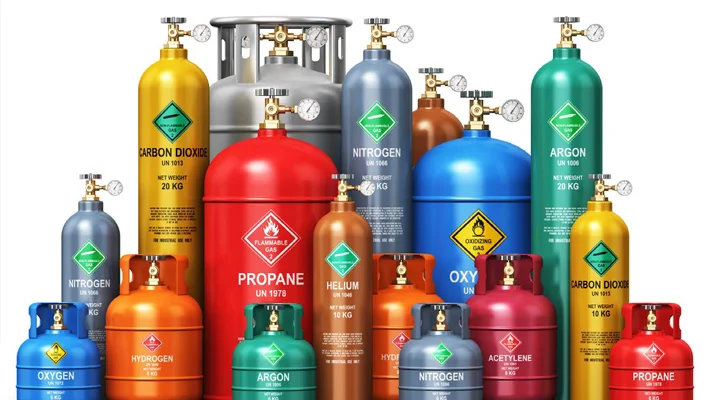Secure your future with Farm Insurance!
Compressed Gas Cylinder Hazards and Controls
Mar 10, 2025, 1:52 PM

Compressed gas cylinders are widely used and present both fire and explosion hazards. Unsecured cylinders can rocket into people or through walls if they tip over, suffer damage to the valve, and release contents under high pressure.
The following general rules apply to all cylinder storage. Refer to the National Fire Protection Association 58 Liquified Petroleum Gas Code or appropriate OSHA codes for more information.
Key Practices
- Report unlabeled or damaged cylinders immediately.
- Store cylinders away from heat sources.
- Cylinders must be secured and stored where they will not be struck and tipped over. Use a chain, bracket, or other restraining device at all times to keep cylinders from falling.
- Use proper carts to transfer cylinders and make sure that all cylinders are secured against tip over when being transferred. Don’t lift cylinders with magnets, hooks, ropes, or slings. They can only be lifted using cradles or enclosed platforms.
- Never use a hammer to open a valve or loosen a cap. If the cylinder does not have a wheel to open and close the valve, then a key, handle, or nonadjustable wrench must be on the cylinder stem while in service. A way to quickly shut down the cylinder should be provided.
Key Facts
- Only trained people should handle cylinders.
- Oxygen must be stored at least 20 feet from fuel gas cylinders or other highly combustible material. This includes, but is not limited to: Acetylene, grease, oil, or flammable gases.
- Any cylinder in storage that is not being used must have a protective cap in place, even if empty.
- Store cylinders upright, and never on their sides.
- Don’t drop, drag, or roll cylinders.
Download This Article
Additional Safety Topics
We've Got You Covered!
We offer Farm Lines Insurance in five states: Ohio, Michigan, Illinois, Indiana, and Wisconsin.
Secure your future with Farm Insurance!
Hastings Insurance Company
404 E. Woodlawn Ave.
Hastings, MI 49058
Monday-Friday
8:00 a.m. - 4:30 p.m. (EST)
(800) 442-8277
Terms of Use and Privacy Statement© Hastings Insurance Company. All rights reserved.



